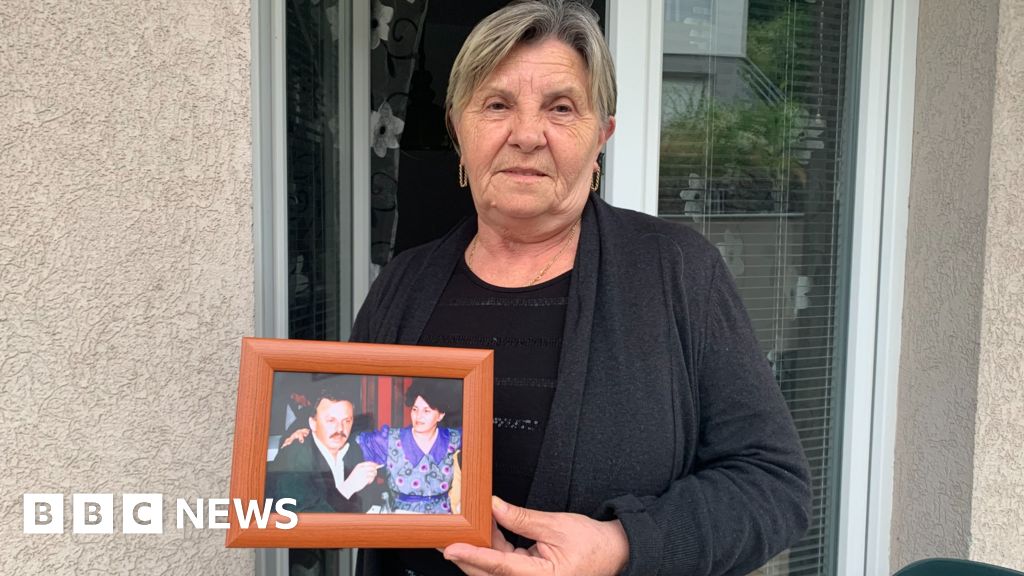
By Natasa Andjelkovic, BBC News Serbian
By Grujica Andric, BBC News Serbian
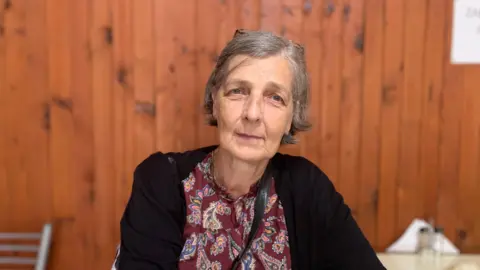 BBC
BBCEvery July, Sabrija Hajdarevic returns to Srebrenica to visit the graves of her husband and father.
They were among around 8,000 Bosniak Muslim men and boys killed in 1995 by the Serb forces.
The 67-year-old now lives thousands of miles away in Australia, but the annual trip means a lot to her.
This year is even more poignant, as for the first time 11 July will be marked as the International Day of Reflection and Commemoration, following a UN General Assembly ruling in May.
The Srebrenica massacre, recognised by the UN as a genocide, was the shocking climax of the war in Bosnia – a conflict that erupted after the breakup of Yugoslavia in the early 1990s.
In Bosnia, one of the countries emerging after the breakup, three communities were in conflict – on the one hand, Bosnian Serbs, backed by Serbia, and, on the other, Bosniaks and Croats.
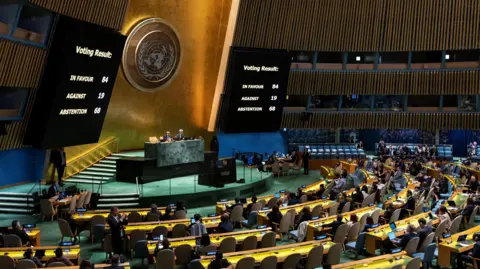 Reuters
ReutersAbout 40,000 Bosniak Muslims lived in Srebrenica. Many were forced to flee a Bosnian Serb campaign of ethnic cleansing during the 1992-95 war.
The town was declared a UN safe zone in 1993 and international peacekeepers were charged with protecting it from any attacks.
But in July 1995, Bosnian Serb forces – led by military commander Ratko Mladic – stormed the town, overwhelming the peacekeepers.
The Serb forces rounded up the town’s men and boys, most of whom were never seen alive again.
They were either killed in droves or murdered when they tried to escape through the wooded hills around Srebrenica.
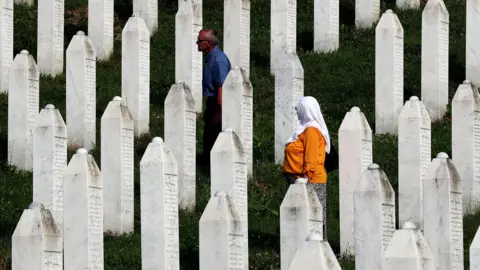 hoto by FEHIM DEMIR/EPA-EFE/REX/Shutterstock
hoto by FEHIM DEMIR/EPA-EFE/REX/ShutterstockThe brutal killing of around 8,000 men and boys became known as Europe’s worst mass atrocity since World War Two. The remains of about 1,000 people are still missing.
Ratko Mladic was later jailed for life for war crimes, including genocide, and nearly 50 Bosnian Serbs were also convicted.
The recent UN resolution, designating 11 July an International Day of Reflection and Commemoration of the Srebrenica Genocide, also condemned any denial of the massacre and glorification of war criminals.
But most Bosnian Serbs, as well as many people in Serbia, have repeatedly denied that what had occurred in Srebrenica in 1995 constituted genocide.
Sabrija pushes back at claims that the Srebrenica killings were not targeted.
“What happened should be known, instead of having all these lies flying around,” she says. “My soul hurts.”
Some Bosniak families have been waiting for decades to lay their loved ones to rest, as the identification process is lengthy and difficult.
Sabrija was able to bury her husband’s skull – the only body part which was unearthed.
Her father’s remains are yet to be found, although she knows he was killed close to their house in Srebrenica as her mother witnessed the killing.
Six months after her father’s murder, her mother died, too – “of sorrow,” says Sabrija, fighting back tears.
Many victims of the Srebrenica massacre are buried at nearby Potocari cemetery. Thousands of simple white tombstones sit in a field on a slope of a hill, surrounded by woods.
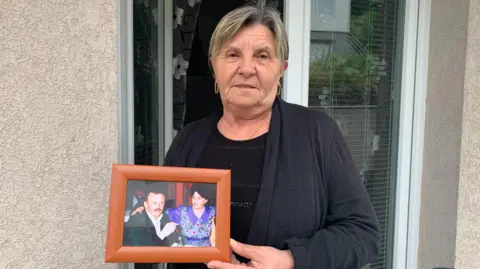
Berija Delic also lost her husband in the massacre. His remains were only found a decade later, and were buried in 2010.
Last year, Berija decided to return to Srebrenica from Malta, where she sought refuge after the war.
Her son, a Muslim, married a Serb Orthodox woman who “loves my baclava,” she says, referring to a sweet delicacy she cooks.
Before the 1990s war, Srebrenica was largely a Bosniak Muslim town.
Now, the majority of the population is Serb; some of the residents had been soldiers during the conflict.
“Even now you see someone walking around town, and you know that he has killed [Bosniaks] – but you remain silent, you cannot deal with that,” says Berija.
Following the war, Bosnia was divided into two entities – Republika Srpska and Bosnia-Herzegovina. Srebrenica is in Republika Srpska.
In the years since the war, the Bosniak population dwindled and the Serb population grew, but now they have one problem in common – unemployment.
“Serbs and Bosniaks have no problems between them here, tensions are brought by people from the outside,” says Slavisa Petrovic, a 37-year old Serb who runs the local tourist office.
But he says the town needs jobs for people to entice them to stay.
The recent UN resolution on the massacre has not changed anything, Slavisa adds.
“People are leaving Srebrenica now just like they as they did before it [the adoption of the resolution]. There are no jobs, just like there weren’t before.”
There are signs of decline in the town. A once popular local spa and a formerly luxurious hotel are closed, having been abandoned for decades. Their walls are covered in graffiti.
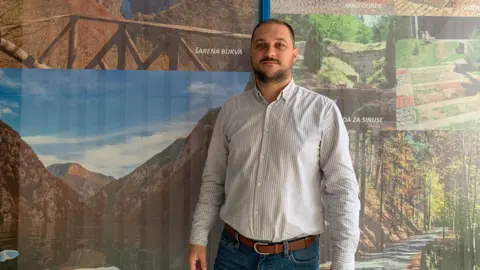
The roads leading to neighbouring villages, where farmers with healthy livestock once lived, are overgrown with weeds.
Many local homes are still in ruins. A mosque and a Christian Orthodox are sitting on a hillside overlooking the town, its wartime wounds unhealed.
Serb and Bosniak children go to local kindergardens and schools together, and photographs of the new generation are proudly displayed in a public place in the centre of the town.
But it is most likely that the youngsters will soon leave for good.
Slavisa is sad that locals keep abandoning the town. “It feels like they are leaving my house,” he says.
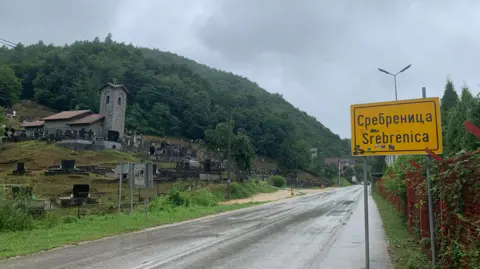
Only three of his classmates are still living in Srebrenica. The rest have moveld elsewhere.
He, however, is determined to stay.
But even he admits that his four-year-old daughter is unlikely to feel the same when she grows up.

